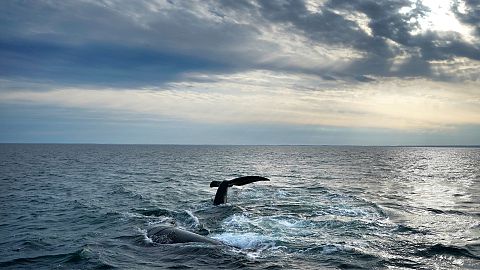The main purpose of this ongoing blog will be to track planetary extreme, or record temperatures related to climate change. Any reports I see of ETs will be listed below the main topic of the day. I’ll refer to extreme or record temperatures as ETs (not extraterrestrials).😉
Main Topic: Arctic Clouds Blamed for Underestimating Global Warming in Climate Models
Dear Diary. Anytime I see an article about potential improvement of climate models, I sit up and pay attention, and you should too. Science is always refining models, and in the case of climate science, it is crucial to forecast how fast and how badly our climate will warm so that authorities can make better plans to protect the public from items like sea level rise.
Evidentially, the effect of clouds residing above the Arctic Circle is not very well taken account by climate models such that there has been an underestimation of warming. That’s bad news for humanity because some bad consequences of climate change, worse than what we already are contending with, may be occurring sooner before 2050 and not later towards 2100.
Here are more details from EURO News:
Why climate models miss the mark on Arctic warming – and how scientists are improving their accuracy

Copyright W Noort/Unsplash
Published on 21/05/2025 – 16:58 GMT+2•Updated 22/05/2025 – 9:05 GMT+2
Researchers have also warned that even limiting global warming to 1.5°C won’t save our polar ice sheets.
If you’re wondering why Arctic temperatures are rising so much faster than predicted, scientists at Kyushu University think they’ve found an answer: it’s in the clouds.
In a study published in Ocean-Land-Atmosphere Research, researchers from Kyushu University analysed 30 leading climate models and compared them to satellite observations of Arctic cloud patterns. They discovered a widespread modelling error.
Most simulations overestimate the amount of ice and underestimate the amount of liquid in wintertime Arctic clouds.
That may sound like a small detail, but it has big consequences for how accurately scientists can predict warming in one of the world’s most sensitive regions.
Clouds could be acting like a thermal blanket over the Arctic
The Arctic is warming three to four times faster than the global average. A major reason for this is how clouds interact with heat.
In summer, so-called mixed-phase clouds – which contain both ice crystals and supercooled liquid water – reflect sunlight, cooling the surface. But in the dark winter months, these same clouds trap heat and insulate the surface like a thermal blanket.
“The more liquid water these clouds contain, the better they are at trapping heat,” explains study co-author Momoka Nakanishi.
Related
- Keeping 1.5C global warming target alive hangs on governments not tech, study warns
- Global warming may melt some glaciers in Austria in 10-15 years
Most models, however, suggest that clouds have less ice in them than they do. That could explain why the rate of Arctic warming in recent decades has outpaced predictions. It could also warp future projections – but not in the way you might think.
The future may be less dire than it seems – but the present is worse
As the Arctic continues to warm, more ice in clouds converts to liquid, increasing their heat-trapping power. This creates a short-term condition known as “cloud emissivity feedback,” which accelerates warming. But, the researchers add, there’s a limit to it.
Once clouds are rich enough in liquid, they begin to absorb heat and re-emit it to Earth completely. Meaning, additional warming makes little difference, because the clouds are already re-emitting heat to the maximum extent possible.
Since many climate models don’t accurately represent how much liquid is already present, they could be predicting greater warming than is likely in the future.
In other words, they underestimate today’s warming and overestimate tomorrow’s.
Fixing this flaw, researchers argue, could improve not just Arctic projections but also extreme weather forecasts in other parts of the world, which are influenced by polar systems.
The damage could already be done
The study adds context to another sobering piece of research, published earlier this month in Communications Earth & Environment.
That study found that even if global warming is limited to 1.5°C, we could still trigger irreversible melting in the massive polar ice sheets in Greenland and Antarctica, leading sea levels to rise several metres even under optimistic emissions scenarios.
Related
- Pumped up pollen: How climate change could be making your seasonal allergies worse
- New Greenpeace photos show rapid Arctic ice retreat in Svalbard
Both studies point to the same truth: our understanding of polar regions, from clouds to ice melt, is still catching up with reality.
If climate models continue to lag observed trends, the world could be blindsided by faster-than-expected changes in sea level, weather extremes and ecosystem collapse.
As cloud study co-author Takuro Michibata put it, “Fixing these models is essential not just for the Arctic, but for understanding its impact on weather and climate change across the globe.”
Read more

Urban wilding in action: Breda becomes EU’s first National Park City

Investigation exposes the ‘sprawling empire’ of 5 Dutch fishing giants

Lack of endangered whale babies raises alarm among scientists
Here are more “ETs” recorded from around the planet the last couple of days, their consequences, and some extreme temperature outlooks, as well as any extreme precipitation reports:
Here is More Climate News from Thursday:
(As usual, this will be a fluid post in which more information gets added during the day as it crosses my radar, crediting all who have put it on-line. Items will be archived on this site for posterity. In most instances click on the pictures of each tweet to see each article. The most noteworthy items will be listed first.)